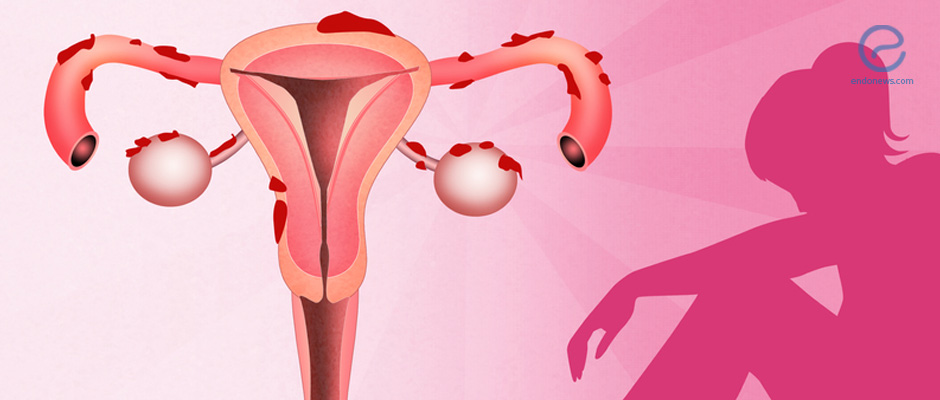Overview of NICE Endometriosis Guidelines
Sep 22, 2017
The guidelines recently published by NICE detailing the proper methods for diagnosis and management of endometriosis.
Key Points
Highlights:
- The authors of this paper review the guidelines recently published by The National Institute for Health Care and Excellence (NICE).
- These guidelines seek to better the healthcare model used by doctors to diagnose and manage endometriosis.
Importance:
- Endometriosis is a painful and whole-body disease that can adversely impact a woman’s daily life.
- Misdiagnosis and delay in treatment can result in more suffering.
What’s done here?
- The article itself summarizes guidelines for the diagnosis and treatment of endometriosis that were recently published by NICE.
- The process by which NICE formulated these guidelines is a lot more involved.
- The National Guideline Alliance utilized the NICE guideline development methods to create this healthcare model for managing endometriosis. A guideline committee was established and consisted of professionals from various disciplines including but not limited to gynecology, reproductive sciences, and pain medicine. Other specialists that were not part of the guideline committee also contributed to this project.
- The committee compiled a variety of pertinent clinical research questions. They collected clinical data, and that data was then subject to analysis. GRADE methodology was one of the analysis tools and was used to rate quality.
- Drafts of the guidelines were subject to multiple reviewing sessions.
Key results:
- There are two versions of the final guidance on the NICE website: full and short guidelines.
- How to diagnose endometriosis:
- Imaging tools such as ultrasound scanning, transvaginal and transabdominal, as well as pelvic magnetic resonance imagining (MRI) scans can be used to detect endometriosis.
- Raised cancer antigen 125 (CA-125) levels can be detected by blood tests and can be an indicator of endometriosis; however it is not recommended to use CA-125 as a diagnostic tool.
- Diagnostic laparoscopy can also be used to detect endometriosis.
- It is important to note that scans and tests can appear normal; however, one should not rule out the diagnosis of endometriosis based on a regular scan.
- Treatment of endometriosis:
- Analgesics such as NSAIDs and paracetamol can be used alone or in combination to help with the symptoms of endometriosis.
- Hormonal treatments can also be used to manage the illness.
- It is highly recommended that the primary physician refer the patient to specialists for further treatment.
- Referrals:
- Women should be referred to a gynecologist if they have serve and persistent endometriosis, endometriosis in the pelvis, or if they are not responding to treatment.
- Women should be referred to an Endometriosis center if the endometriosis is deep infiltrating.
- Young women can also be at risk for endometriosis. In the case that a health care provider suspects endometriosis, it is best to refer the patient to a pediatric/adolescence gynecology center or an endometriosis center.
- Surgical options:
- Surgery is only recommended if traditional less invasive treatment methods do not work or if an individual is suffering from deep endometriosis.
- The guidelines suggest that individuals considering this option have a discussion with their health care provider before proceeding.
- If a person wants to get pregnant and is seeking surgical intervention, the guidelines recommend a multi-disciplinary approach with a battery of tests to be performed.
- Support and information available:
- The committee has put together a list of recommendations for women and health care providers going through the management and treatment process. Without a doubt, any individual fighting this illness must have information and guidance.
- Organization and implementation of care:
- The guideline delineates the type of support that must be available at each level of support. The entire chart can be found within the paper.
- The implementation of care can be difficult, especially in certain geographical regions; however, steps are being taken to make this process a lot easier.
- The committee also proposed avenues for future research.
Limitations of the study:
- The authors of this paper state that these guidelines were made using mainly low quality evidence, which was then supplemented with expert opinion.
Lay Summary
In this article titled “Diagnosis and management of endometriosis: summary of NICE guidance,” Kuznetsov et al. talk through the recent endometriosis guidelines set forth by The National Institute for Health Care and Excellence (NICE). The BMJ publication hopes to elucidate the model for healthcare best suited for individuals with endometriosis. It is important to note that the intended audience for this review is the health care providers who women go to first.
The NICE guideline delineated within this paper was created using extensive clinical research, which consisted of clinical questions some of which was analyzed using GRADE methodology. Healthcare professionals from a variety of disciplines were recruited for the successful completion of this project.
The resulting guidelines discuss endometriosis detection using imaging, blood tests, and diagnostic laparoscopy; initial management through analgesics and hormonal treatments; referral option; surgical options; and any additional support and information that is available. The guideline also delves into organization and implementation of care. At the very end, the guideline provided avenues for future research.
Research Source: https://www.ncbi.nlm.nih.gov/pubmed/28877898
NICE guidelines diagnosis treatment management

